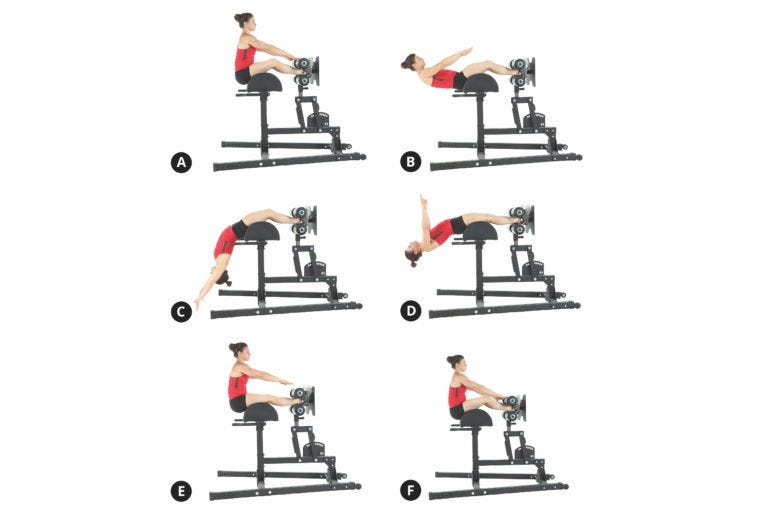#19: If I Could Only Do One Ab Exercise for the Rest of My Life
The importance of range of motion (ROM), why the GHD sit-up outperforms every other core exercise.
Like many of you, I've spent years chasing the coveted six-pack — doing countless crunches, planks, and leg raises. But after many years of trial-and-error and research, I've come to a surprising conclusion: most of what I was doing was unnecessarily complicated and inefficient.
The truth is, abs are primarily made in the kitchen, not the gym. You can torture yourself with thousands of crunches, but without proper nutrition and low enough body fat, those muscles will remain your best-kept secret.
But once your nutrition is dialed in (and that's a prerequisite we can't ignore), the question becomes: what's the most effective way to actually develop those stubborn abdominal muscles? If I ever found myself in a crazy situation where I was being forced to pick only do one ab exercise to do for the rest of my life, it would be the GHD sit-up. Here's why.
The Science of Superior Abdominal Training
Traditional sit-ups and crunches limit your range of motion to about 90-120 degrees. Your torso moves from lying flat to sitting up (or partially up for crunches). This restricted range fails to fully engage the entire abdominal musculature, particularly at the extremes of extension.
Our abdominal muscles are designed to control movement through a range greater than 180 degrees. The GHD (Glute-Ham Developer) sit-up takes advantage of this by allowing your torso to extend beyond the flat position— creating a slight arch in your back at the bottom of the movement before contracting all the way up.
This extended range of motion (ROM) creates several critical advantages:
Complete muscle fiber recruitment: Research shows that training muscles through their full ROM leads to greater hypertrophy and strength gains. By allowing the abdominals to stretch fully before contracting, GHD sit-ups engage more muscle fibers than conventional ab exercises.
Activation of the entire core system: Unlike isolated exercises, GHD sit-ups engage not just the rectus abdominis (six-pack muscles, the outer layer) but also the transverse abdominis (deepest layer of abdominal muscles), obliques, and even portions of the hip flexors and lower back in a coordinated fashion. This integrated activation pattern mirrors how the core functions in real-world movements.
Eccentric loading: The controlled lowering phase of GHD sit-ups creates significant eccentric load on the abdominals, which research indicates may be particularly effective for muscle development.
Why It's Superior to Other Ab Exercises
The beauty of GHD sit-ups lies in their efficiency and effectiveness. When performed correctly, they offer:
Progressive overload potential: Unlike many ab exercises that quickly become too easy, GHD sit-ups can be progressively overloaded by increasing range of motion, adding weight, or modifying tempo.
Time efficiency: Because of the high muscle activation per rep, you need fewer repetitions to achieve significant training stimulus. Quality over quantity.
Scalability: While advanced athletes might perform full ROM GHD sit-ups with added resistance, beginners can scale by limiting range of motion until strength develops.
Practical Application
For proper form and execution, I recommend watching this detailed tutorial:
If you don't have access to a GHD bench, the myotatic crunch performed on a BOSU ball provides a reasonable alternative. The key is to achieve that extended range of motion beyond 180 degrees to fully engage the abdominal musculature.
Programming recommendation: I thought I had a strong core but when I started incorporating GHD sit-ups into my routine, I couldn’t do more than 3 sets, 10 reps per set and my abs were screaming-crying at me the following day. Start conservatively with 2-3 sets of 5-10 reps twice weekly. GHD sit-ups create significant muscle damage when first introduced, so allow adequate recovery between sessions. As your core adapts, you can gradually increase volume (2-3 sets of 15-30 reps) and frequency.
TLDR;
When it comes to abdominal training, the range of motion matters more than pure repetitions. The GHD sit-up's ability to train the core through an extended ROM makes it arguably the most efficient and effective ab exercise available.
If I could only choose one ab exercise for the rest of my life, this would be it. Your core deserves more than endless crunches—it deserves to be trained through its full functional capacity.
The Level 12 Weekly Roundup
Each week, I share one article, one podcast, and one thing that resonated with me recently. These are ideas, conversations, and words that have helped me think bigger, dig deeper, or simply pause and reflect — whether at the gym, at work, or just navigating life.
Article Spotlight
Link:
Source/Author: Creator Economy by Peter Yang
Highlights: “Just ****ing start. The best way to learn if something will work is to try it. Don’t waste time making grand plans or thinking, “Someday, I’ll do this.” Instead, just ****ing start and get real feedback.”
Podcast Pick
Episode:
Source/Host: The Huberman Lab by Andrew Huberman
Highlights: Benefits of light therapy, including infrared light, red light, and sunlight, for improving mitochondrial function in all the body’s organs. How to reduce the risk of influenza, colds, and other illnesses that affect the lungs, sinuses, and gut. Air quality and its impact on the immune system.
Something that Resonated
This week, I have a book recommendation for anyone interested in the U.S. politics behind health equity — The Political Determinants of Health by Daniel E. Dawes
Stay relentless.
Carina



